- europages
- >
- COMPANIES - SUPPLIERS - SERVICE PROVIDERS
- >
- capillary
Results for
Capillary - Import export
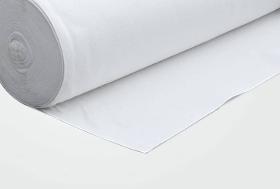
OPTIGRÜN INTERNATIONAL AG
Germany
Optigrun Protection and Storage Fleece RMS 500 K protects the roof membrane with simultaneous function of separation, water storage, excellent suction and defined filter function. Installation under the green roof structure directly on the waterproofing Protective layer on roof waterproofing with particularly good suction and capillary action Especially to avoid ponding on uneven roofs Puncture resistance 2,600 N (EN ISO 12236)
Request for a quote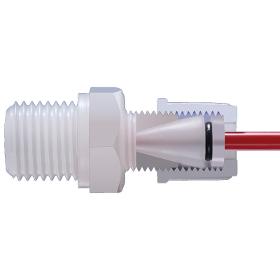
EM-TECHNIK GMBH
Germany
The 2M connector was developed for thin pipes such as capillary tubes with an outside diameter from 0.7 to 6.35 mm. It consists of a sealing cone which is pushed into the matching inner cone of the connector and acts as a bushing for the pipe while performing a sealing function. An additional O-ring, which is protected from damage by a pressure disc, holds the pipe in place and prevents it from being pulled out accidentally.
Request for a quote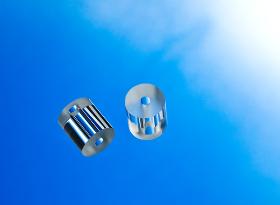
HILGENBERG GMBH
Germany
A sensor only is not a responsible for good measurement. Often it depends on the surrounding conditions. Thick-walled glass-capillary-sections serve for the sensor as solid basis. Fitted on top, the sensor is mostly islolated from thermal and other environmental impacts. Solid connections between glass and metal For the production of glass-feed-throughs or glass metal sealings, precise cuttings of capillary-tubes are needed. These special tubes are glasses, which are adjusted to the physical parameters of the metals. We draw and cut such capillaries precisely to final size. Thereby the glasses can be fused on the customers wires and pins, which are made of metal. Scatter discs for the endoscopy Glass rings in different sizes with two satin cut sides, allow to manufacture small ring lightings for example for the endoscopy. By means of the rough surfaces of the glass rings, the light, coupled on the back, is refracted and diffusely spread. Different diameters and thicknesses as...
Request for a quote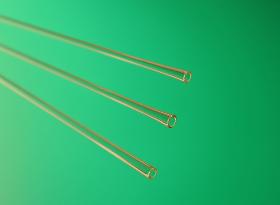
HILGENBERG GMBH
Germany
The major difference between our standard capillaries and conical capillaries lies in the different opening diameters on both ends. Whereas standard capillaries are manufactured with the redrawing-method conical capillaries are produced in a discontinuous process. Materials Soda-lime glass (AR, I860, PH360 etc.) gamma sterilized soda-lime glass Borosilicate glass (DURAN©, PYREX©, SIMAX© etc.) Neutral glass (FIOLAX© and DUROBAX©) Aluminum silicate glass (Schott 8252/8253) Lead glass (lead content up to 28%) Sealing glasses for various metals such as: kovar, molybdenum, steel, silver, platinum, palladium Process of Production During the production process of the conical capillaries a straight tube or capillary is heated and drawn. By drawing the capillary a pointy conical, tapered form, a so-called double-tip, is formed. The tip can be parted in the capillary’s smallest diameter and results in a larger diameter on one side which is determined by the blank used in the process, as...
Request for a quote
HILGENBERG GMBH
Germany
The main feature of these new capillaries are the four separate chambers in a circular cross-section. The chambers inside the capillary are separated by an extremely thin membrane, which retains its shape also while the tube is being drawn to a fine tip. This makes them ideally suited for liquid perfusion applications with cells, because deformation of the cell walls and the membrane is reduced to a minimum. Theta cross-section capillaries
Request for a quoteDo you sell or make similar products?
Sign up to europages and have your products listed

HILGENBERG GMBH
Germany
The distinctiveness of these capillaries is their very thin wall-thickness in relation to their diameter. The extremely thin walls lead to the special feature of these capillaries to be deformed easily. Additional features linked to the thin wall-thickness are minimal optical distortion as well as very low absorption for a wide range of radiation. This feature is used e.g. for the construction of optical measuring cells. Materials Soda-lime glass (AR, I860, PH360 etc.) Gamma sterilized soda-lime glass Borosilicate glass (DURAN©, PYREX©, SIMAX© etc.) Neutral glass (FIOLAX© and DUROBAX©) Aluminum silicate glass (Schott 8252/8253) Quartz glass (naturally melted quartz glass and synthetically produced quartz glass, incl. F300) Lead glass (lead content up to 28%) Sealing glasses for various metals such as: kovar, molybdenum, steel, silver, platinum, palladium Process of Production Like most of our capillaries the ultrathin capillaries are manufactured using the redrawing method....
Request for a quote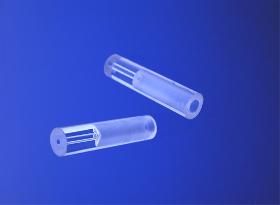
HILGENBERG GMBH
Germany
A specialized product that was developed for installing ignition elements and insulating them from the environment. Expansion of the inner diameter is also possible with longer components. For embedding other components, special gas and water-proof adhesives are available, which also retain their properties at high temperatures.
Request for a quote
HILGENBERG GMBH
Germany
Our highly versatile glass nozzles are also suitable for high-pressure applications. Because glass nozzles are simply large micropipettes, they have similar characteristics. Their flexible design enables them to be adapted to practically every application. For example, nozzles with very short or very long tips with a uniform internal channel can be manufactured. Similarly, the nozzle diameter is freely selectable. The workpiece holders for shaping the tips range from 1,5 mm up to 10 mm. Good connections ... The nozzles can be adapted in various ways. Apart from standard plastic Luer connectors for outlet diameters between 1 and 2 mm, sealing beads for Swagelok couplings or customer-specific sealing systems can be provided. Very small nozzles can also be supplied with closed tip to prevent the fine opening from being contaminated. Application areas Whether for Mixing, atomizing, spraying, metering liquid and powdery substances and samples or for the drawing of fine metal...
Request for a quote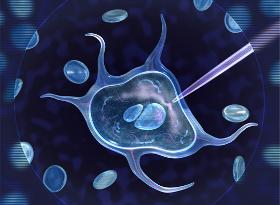
HILGENBERG GMBH
Germany
For the specialized field of in-vitro fertilization (IVF), i.e. the insemination of an egg cell outside the body, we offer various solutions. These include ready-mounted capillaries that are glued into pipettes for easier handling, as well as capillaries with Luer connection for fitting to standard disposable syringes. In-vitro fertilization is used both human medicine and in veterinary medicine. The IVF capillaries are used to hold the egg cell or to separate it from the surrounding tissue. Capillaries with different diameters are available for this purpose. Micropipettes are used to inject sperm cells into the egg cell. Capillaries for InVitro-fertilization
Request for a quote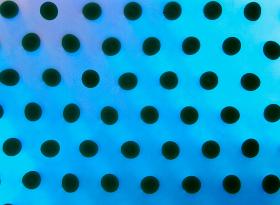
HILGENBERG GMBH
Germany
The cross-sections of multi-channel capillaries consist of a large number of single holes, which are either in a random order or neatly arranged. Depending on the application in which these capillaries are used they can fulfill several tasks. Materials Soda-lime glass (AR, I860, PH360 etc.) Borosilicate glass (DURAN©, PYREX©, SIMAX© etc.) Aluminum silicate glass (Schott 8252/8253) Process of Production Two different production methods are used to manufacture multi-channel capillaries: 1. Production from a preform Prior to drawing the capillary several performs are mounted and joined together. During this process the channels are created from a single capillary. Hollow spaces are then filled with glass rods and are evacuated with heat. All unintended side channels and hollow spaces between the capillaries are sealed during this process and result in a closed cross-section, which is only punctuated with the inner geometry of the single capillaries. Reproducible profile sizes,...
Request for a quote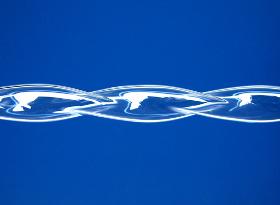
HILGENBERG GMBH
Germany
Twisted glass tubes and capillaries are produced simply by heating and twisting. By this means, the tubes obtain a large internal surface in relation to their length, enabling them to be used e.g. as cooling sections. Another application area is for ornamental and design articles.
Request for a quote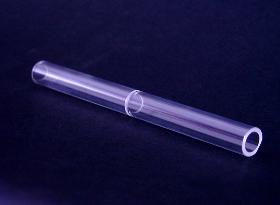
HILGENBERG GMBH
Germany
If required, we can supply capillaries and tubes with predetermined break points. For this purpose, the component is notched at the required breaking location. If the component is then subjected to a bending force, it will break at the notched point. To prevent unintended breakage, we recommend using medium or thick-walled tubes and capillaries.
Request for a quote
SANHA GMBH & CO. KG
Germany
SANHA produces capillary fittings of the series PURAFIT® - just like our press fittings PURAPRESS® - from the completely lead-free premium material silicon bronze CuSi. This copper alloy is optimally adapted for the use in drinking water systems as it fulfills the strict legal requirements of the Drinking Water Directive. By using lead-free PURAFIT® capillary fittings, installers can always be certain that they will not be subject to any legal claims in case the lead tolerances are exceeded. Also, lead-free fittings satisfy the market's desire for safe and healthy drinking water installations. PURAFIT® capillary fittings from CuSi are tested and certified by all relevant national and international certification bodies and can be used for a wide variety of applications in the sanitary and heating industry
Request for a quoteResults for
Capillary - Import exportNumber of results
14 ProductsCountries
Company type